Hello class! Take your seats. It’s time for a little classroom time on embroidery terminology. Be prepared to learn whether you are new or old to the embroidery world! Knowing the terminology is important to participate in discussions, ask questions, get answers and fully understand the context discussed.

This article is not to provide all the terms to you (though we will!) or to replace valuable tools like our free Digitizing 101 Course, but to build your education and make you the best embroiderer you can be.
Interested in learning the foundation of embroidery digitizing theory to learn what’s really happening under your needle? We will teach you the basics of creating & editing your own designs, free! Click here to learn more about our free Digitizing 101 Course.
Let’s discuss where terms come from, machine embroidery definitions, and how to find more information to deepen your embroidery knowledge. So put on your thinking caps, get your bag lunches ready, and recess will be at your machines having FUN!
Machine Embroidery Terminology
Names for embroidery stitches both by hand and by machine are as different as there are stars in the sky! They come from what stitches look like, the machines that make them, and what they do.
Machine Embroidery Historical Terms
We have all heard stitch names we did not understand. Some we figured out, like “bean stitch” (looks like a bean) or satin stitch, but many of the older names for embroidery stitches are drawn from the world around us.
Historical embroidery terms were most often drawn from the world around us and described what we saw. Tatami stitch looks like the tatami mats in Japan used on the floor. Vermicelli is another great example; not just a plate of yummy Italian pasta, Vermicelli (worms in Italian) is the name for a meandering fill stitch.
Machine Embroidery Modern Terms
Modern embroidery terms often come from the machine that stitches them. Merrow Machines, for example, create a wonderful clean edge on patches and emblems. Likewise, Schiffli machines create lace, Cornely Machines create chain stitch and chenille; all have inspired embroidery stitches in modern machines.
Though we can’t define ALL the terms you will encounter, let’s attempt to round up all those definitions and put them in a handy place where beginners and old-timers alike can refer to them. We have amassed terms and divided them into categories to make them more easily found and understood.
Machine Embroidery Glossary
| Terminology | Meaning |
|---|---|
| .ART | Bernina machine file format |
| .DST | Tajima, Brother, Jisqvarna, Janome or Pfaff file format |
| .HUS | Husqvarna viking file format |
| .JEF | Janome file format |
| .PES | Brother, Babylock file format |
| Applique | Stitching down a separate piece of fabric as an applique (can be edged with satin stitch) |
| Auto Jump | Automatic jump to next object |
| Average Stitch Length | The average stitch length (2.5) |
| Bullet Proof | Too many stitches in the same place makes the embroidery very dense and solid |
| Color Change | Changing from one color spool to the next |
| Density | How tightly packed stitches are in an area |
| Digitize | The process of converting artwork into a computerized stitch file capable of being read by a machine |
| Digitizing Tablet | A tablet (like an ipad) which uses a touch screen to enter information. Can be used for drawing |
| ESA | Embroidery specific alphabet |
| File Format | The type of file for each machine |
| Font | The style of a letter |
| Glyph | A symbol or shape |
| Hatch Smash | A knockdown stitch used for knocking down pile or terry cloth looping |
| Hotkey | A keyboard shortcut in Hatch (John has a great cheat sheet) |
| Jump Stitch | A long stitch created when the needle moves from one completed object to the next at a new point |
| Lock Stitch | The stitch an embroidery machine makes |
| Maximum Stitch | The maximum suggested satin stitch length (wearable 7.0mm, non-wearable 10mm) |
| Minimum Stitch | The minimum suggested satin stitch length is 0.5mm |
| Object Stitching Start Symbol | Small circle |
| Pathing | Properly entering objects in order and connecting them with the next to reduce trims and make the design stitch well |
| Pull Compensation | Making the object slightly larger to “compensate” for the amount of pull in the threads |
| Push Compensation | Making the object slightly smaller to “compensate” for the amount of push in the threads |
| Registration | How closely the design matches up |
| Repeat | How many passes of thread in a design |
| Sequence | The order of stitching |
| Split Stitch | In satin stitch when stitches are too long, the software splits the stitch so it falls within the limits |
| Start Symbol | Green diamond |
| Stitch Filter | In Hatch there is a minimum stitch set so any nodes less than 0.3mm will not stitch |
| Stop Symbol | Red plus |
| Tie In Stitch | Small stitch used at the start of a sewing cycle which lock in the thread |
| Trim Symbol | Small triangle |
| Underlay | Stitches laid down under decorative stitching with support it. Can be a fill or single running stitch line |
| Walking Stitch | Running stitch |
| Zipped File | File which is compressed making it small and dense, can be easily sent. |
Machine Embroidery Technique Terms
| Terminology | Meaning |
|---|---|
| 3D Satin | Satin stitch sewn in 3 passes (each progressively wider until there is a 3D built up stitching) |
| Back Stitch | A stitch which sews two stitches forward and one in reverse, then two forward, etc. |
| Bean Stitch | Triple pass, stitching three times between each stitch |
| Blanket Stitch | Similar to the traditional blanket stitch, a running stitch along one edge has stitches that periodically are stitched to the right or left |
| Branching | To automatically sequence and group selected embroidery objects. The only objects that cannot be branched are motif runs and fills. **There may be from 1-4 passes in some parts of the design. This is different than redwork |
| Chenille | Textured embroidery stitch which looks looped or fuzzy |
| Column Stitch | Another name for satin stitch |
| Contour Stitch | Running stitch with offset, which fills in shape. Follows the shape of the object & has at least 2 points and stitches travel back and forth between |
| Embossed Stitch | Variation of tatami/satin stitch. Stitches are laid down in patterns to create an embossed look |
| Feather Side | Can be placed on either side or both. Altered stitch length giving a feathered look |
| Fill Stitch | Stitches which are designed to fill a large area. Can be satin, tatami, or motif |
| Floriani | Curved tatami stitch which can be shaped |
| Fringe | A technique that produces fringe using satin stitches anchored by a center running stitch |
| Gradient Fill | Gradation of stitches to produce ombre effect |
| Merrow Edge | A satin stitch with a locking cross stitch created by a merrow machine (special serger for patches) |
| Motif Stitch | Using a standard motif or one you create can be used as a fill, edging, etc. |
| Radial Stitch | Tatami stitching which runs in a circle with a center which can be adjusted in position or size |
| Redwork | Exactly 2 passes throughout the design |
| Ripple Stitch | Offset stitch which fills in objects. Each pass gets progressively smaller |
| Running Stitch | A single line of stitching used for decoration, fine detail, or connecting objects to reduce trims |
| Satin Stitch | Thread is passed back and forth in a design to create a solid satin-like fill (minimum space between stitches is 0.1mm) |
| Steel Stitch | Old term for satin stitch |
| Stem Stitch | Running stitch which has a jagged look |
| Stipple Stitch | Meandering fill (old term vermicelli) |
| Tackdown Stitch | Running of other stitch used to hold down a piece of fabric |
| Tatami Stitch | A brick-like stitch which fills diagonally based on the tatami woven mats in Japan |
| Trim | Point where machine cuts and ties a knot to finish a section of stitching |
| Vermicelli Stitch | Literally “worms” in Italian -a meandering running stitch used for fill |
Machine Embroidery Materials & Tools Terms
| Terminology | Meaning |
|---|---|
| Backing | Another word for stabilizer |
| Buckram | Stiff, coarse, usually cotton fabric used to back patches, caps, and other items. Ensures extra stabilization for patches and emblems |
| Cutaway Stabilizer | Stabilizer meant to be cut away from the back of the item stitched. Most common for clothing |
| Foam | Foam sheets used under embroidery to make it 3D |
| Polyester Thread | Thread made up of polyester fibers. Man-made, will melt, does not shrink |
| Post-Patch Iron-On Seal | Double-sided heat-activated seal, applied to the back of finished patches for clean polished results |
| Prep Patch Film | Durable 100-micron film for poly twill material to create a firm platform for patches or other materials. |
| Puff Stuff | Place on fabric for an elevated design, no design adjustments required |
| Rayon Thread | Thread made up of wood cellulose shrinks, when wet expands. Softer than polyester, cannot bleach |
| Specialty Threads | Metallic, glow in the dark, silk, linen, kevlar (fire proof), halographic. All need consideration for tension, needle, and speed |
| Stabilizer | Mesh, fiber or woven fabric used to stabilize the embroidery stitching |
| Tackle Twill | Usually polyester twill with a backing which can be ironed on. Used most commonly in football jerseys |
| Tacky Patch Fusible | Double-sided adhesive stabilizer. Eliminates fraying when using your own fabrics to create patches |
| Tear Away Stabilizer | Stabilizer made to be torn away from the stitched design. Not suitable for clothing |
| Topping | Another term for soluable stabilizer |
| Twill | Woven fabric with diagonal lines |
| Wash Away Stabilizer | Stabilizer, another name for water soluable stabilizer |
| WSS | Short for water soluable stabilizer. Stabilizer that dissolves in water |
Learning Embroidery Definitions
We love providing you with all the information we can, but it is important that you also know how to find valuable information to you. Here are some ways to find out more about terms you don’t know or understand.

- User Manual: seems pretty straightforward, right? Most people will not go to the user manual because they are gigantic or boring! Well, welcome to online searching!
For example, the online user guide is a GO TO tool and easy to search with Hatch Embroidery software. It is safe to say that your sewing or embroidery machine also has a user guide like this, and it is a good starting place to look. - Embroidery Legacy: looking at the blog topics and browsing the topic names often provide a great starting place for researching topics related to embroidery like stabilizers, threads, and materials.
Want to browse our large selection of machine embroidery-related articles? Click here to learn more about our embroidery related articles now.
- Internet Searches: though sometimes internet searches can be too wide-ranging, narrowing the parameters of your search will help. When searching for terms, start small and work up until you have an idea of what you are searching for. Just use the term you want to research as a starting place. Otherwise, your search for vermicelli will help you create a wonderful pasta dinner or start a worm farm.
- Difference between stitch terms and mechanical terms: stitch terms are usually descriptive, as we mentioned above. Mechanical terms like push, pull, and pucker will be verbs or adjectives.
Learning about push and pull compensation can sound confusing, but we’re here to help! Click here to learn more, as theory is critical to high-quality embroidered results.
Conclusion: Terminology In Embroidery Is Essential
No, there will not be a test… the actual test is when you sit down to stitch or digitize with a better knowledge of embroidery. It has been a lot to take in but let’s recap a few things to help you best understand the terminology. Are there more things we did not cover? You bet! If you find more, here are some ways to get your answers.
- How to search: the internet is a great place to start. Doing a very specific search of a topic will help narrow down to the answer you’re looking for. Remember, when you search, less is more! Yes, you will get more results with a generic search, but much of the context may not apply.
- Where to search: dictionaries online, general search tools, and your software user guide.
- Check out our free Digitizing 101 Course by clicking here. Let us teach you the most important embroidery theory to help you create better-embroidered results!
Class dismissed, and happy stitching!
P.S. Don’t forget to learn the basics of creating & editing your own designs free by clicking here.

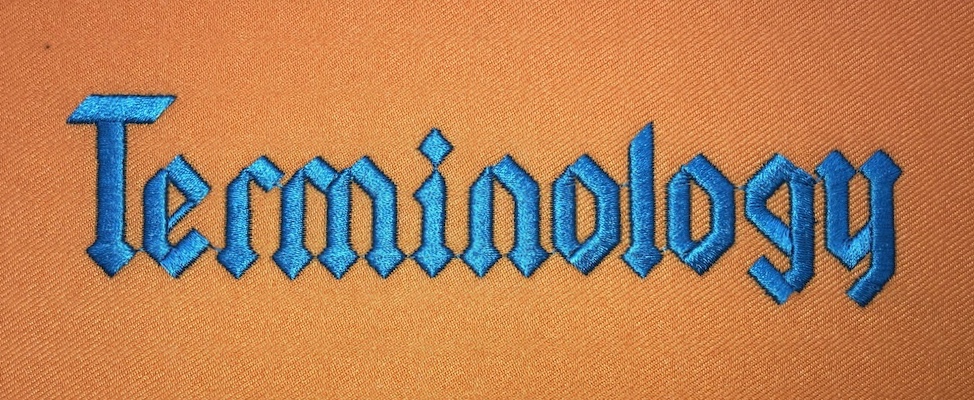
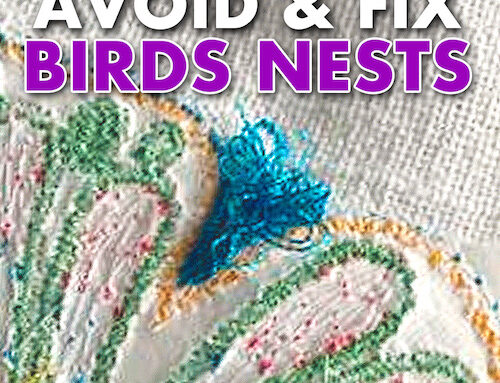
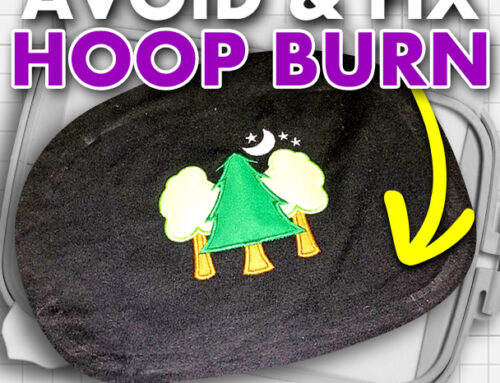
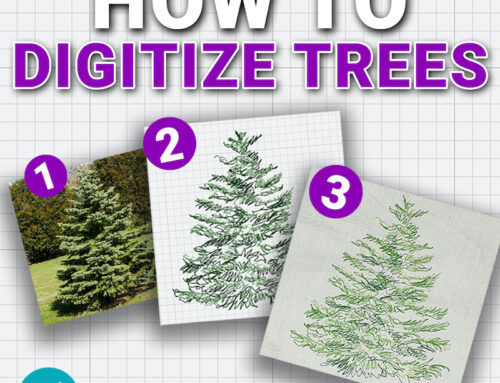
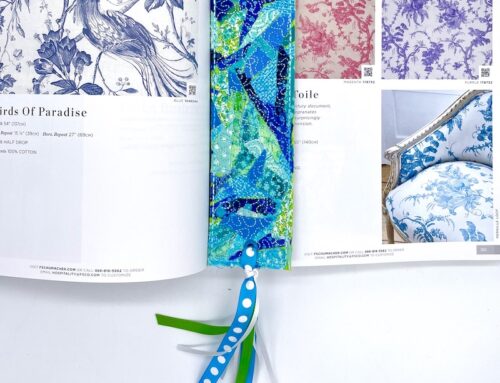
Always enjoy my Saturday morning (here in Australia)reading the Embroidery Legacy articles.=
Thanks so much for your support Julianne 🙂 We’re so glad you enjoy them!
I KNOW THIS HAS NOTHING TO DO THE WORDS BUT I SENT A REPLY IN ABOUT A WEEK AGO AND RECEIVED NO REPLY. I NEED HELP WITH SOFT WARE. COULD YOU PLEASE HELP ME. I NEED TO LEARN MONOGRAMING. I HAVE A BABYLOCK MACHINE. I AM SO FAR BEHIND IN PALLETT I THINK I HAVE VERSION 4 AND I HAVE DESINGERS GALLERY AND STUDUIO III. CAN YOU PLEASE HELP ME? IS THERE A HIGHER VERSION? SHOULD I GET A DIFFERENT SOFTWARE? I WILL BE WAITING YOUR ANSWER.
Hi Denise, Your Pallet is very old and DG is no longer available or supported, I would suggest downloading the free 30 Day Hatch trial and taking our Free Challenge. Lots of lettering/monogramming options and resources to learn the program on our YouTube channel and Group.
Thank you for the information, I’m going to save & print. I learned meaning that I didn’t know about.
We’re happy to hear this article has helped you Bonnie! Great idea to print them out 🙂